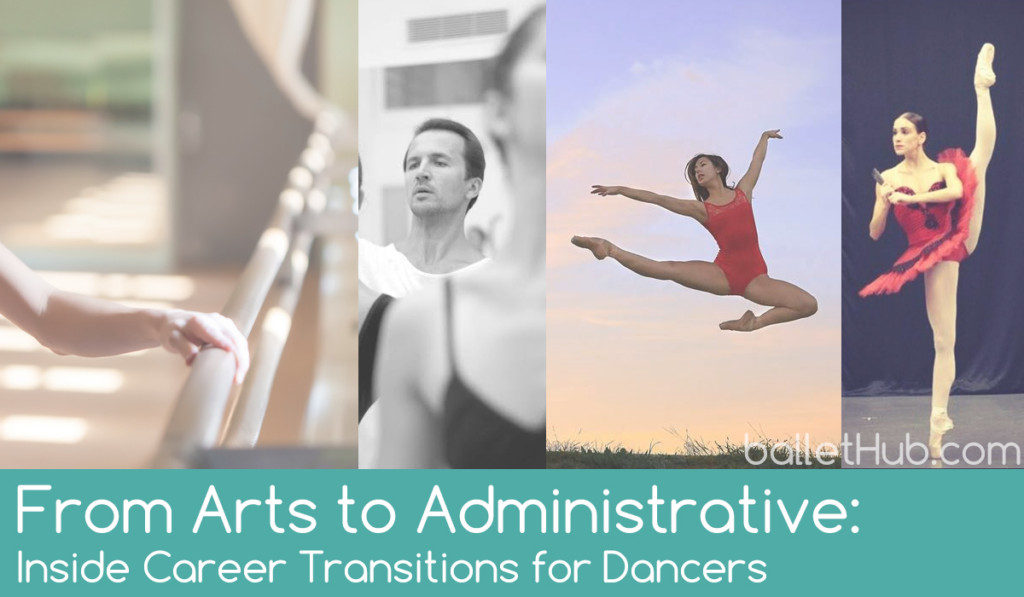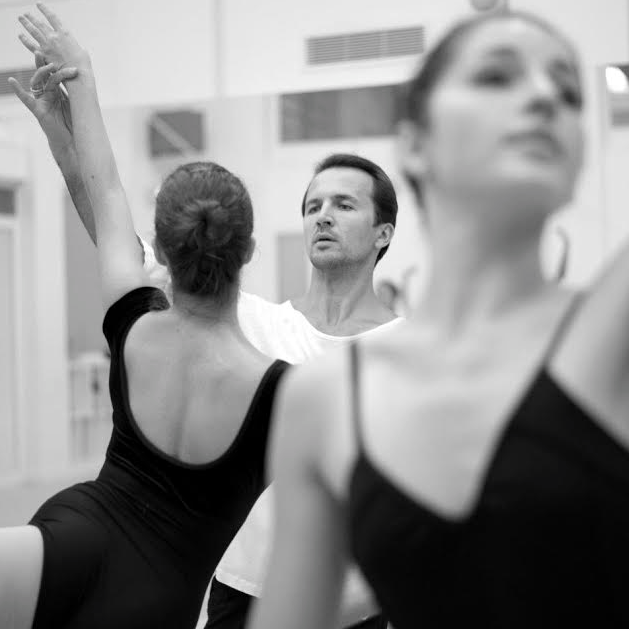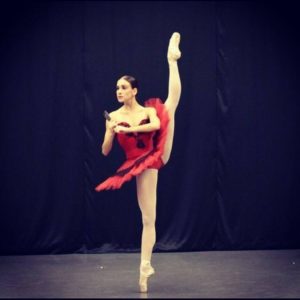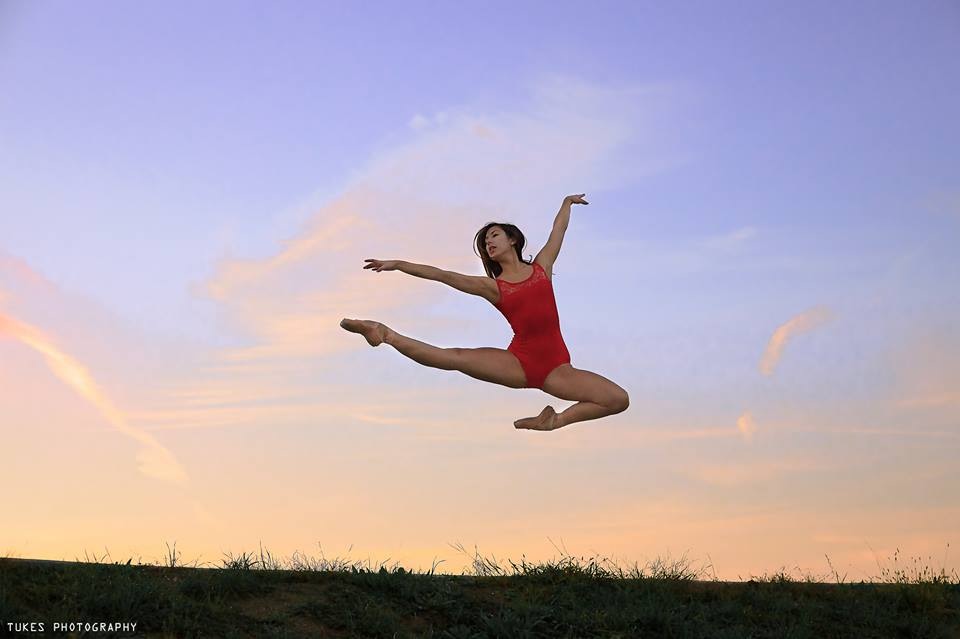There is no question that the life of a dancer is equal parts glamorous and grueling: Traveling, exposure to incredible artistic stimulation, emotionally enriching work, and the pursuit of one’s passion line up beside intense physical demands, unconventional schedules, and a career that operates on a traditionally shorter cycle than your average 9-to-5. Outside sheer artistry, the careers of dancers are emotionally, physically, and intellectually demanding, which is, of course, how they dazzle us onstage with athleticism and the purity of storytelling night after night.
Ballet is a unique endeavor that involves devoting significant parts of yourself to the art form, and typically, the role of a dancer is part of one’s identity from a fairly early age, given the years of training required. Thus, career transitions can be tricky and outright intimidating: When the curtains come down on your performing career, where do you go next? Needless to say, dancers have a bevy of talents and skills that are sought-after in the studio and beyond it, but where does a professional dancer begin in terms of changing their path, whether to a new facet of ballet, or into another industry entirely?
Dancers are uniquely qualified for countless industries, especially with the life experience and identity capital that transcends the traditional resume.
Alexei Kremnev, former Founding Artistic Director of the Joffrey Academy alongside Anna Reznik, has helped several students shift their focus into more administrative positions. He advised: “There is no security in the world, but having your skills, creative thinking and ability to make a quick decision would certainly help you in any transition.” In June 2016, Alexei and Anna launched A&A Ballet, a new, high-caliber school based in Naperville and Chicago, though Kremnev notes that their process of teaching and creating remains the same even within this new chapter. Like all great teachers who gain insight into their students as individuals, Kremnev believes skills developed in the studio translate to the world outside it, and notes that the “career of a dancer is relatively short, but life should definitely continue after you stop dancing.”
While a dancer is shaped by their art (just as, hopefully, the way they dance is shaped by who they are as an individual), life is, too. In Kremnev’s perspective, the most crucial element to a successful career transition, whether it means making the shift to an administrative role within a company, as one of his students did, or exploring other styles of dance, keeping your vision in motion is key: “Einstein said that to keep balance in life you have to keep moving. Of course we learn from every situation, every failure, every success.”
Meanwhile, some dancers have an instinct regarding their future career plans that guides them early on, such as Sarah Hairston, Principal with Cincinnati Ballet who will soon be retiring to move into her new role as Dean of the Academy of Cincinnati Ballet. Remarking that she always made sure to be involved with the Academy as much as possible, Sarah felt teaching was part of her calling: “I always seemed to have in the back of my mind that one day I would like to have my own dance school or run a ballet school after I stopped dancing.” Having been with the company for 15 years, Sarah will spend the next several months pulling double-duty, taking on her new role as Director of the Academy in August before her official retirement in September. She’s candid regarding how her career shift came sooner than expected, noting that, though it was undoubtedly something she wanted one day, she wasn’t entirely ready to stop dancing full-time.
Sarah’s wisdom regarding her own decision-making process is invaluable advice for dancers facing similar difficult calls: “I kept telling myself “don’t pass by your future to have 1 or 2 more years of your past. I cried a lot trying to figure out what was best for me, until finally this voice inside of me said, you know what you should do, you’re just afraid of doing it.” Saying that “we identify ourselves through dance,” Sarah expressed how most dancers do not view their jobs as work, thus making a career transition or retirement all the more challenging. She encourages dancers to “go to all the functions you’re invited to. Talk to people who do things in our world completely different than you. This is how you figure out what you want to do when this amazing career is over.”
Transitioning from performer to teacher is perhaps one of the most incredible moves a dancer can make: After all, there are few things more noble than passing down years of training, wisdom, and inspiration to the next generation. However, within the career transition conversation lies a different kind of shift, in which a dancer continues dancing, but decides to pursue freelance work rather than company life. Abigail Simon danced with the American Ballet Theatre and Joffrey Ballet before taking her career into her own hands: In addition to staying on the road dancing, Abigail has created three side companies, including private ballet coaching, managing dancers and singers, and a photography business in which she builds portfolios for up-and-coming dancers.
Abigail remarked on the differences between company life and freelance, saying “when I was in American Ballet Theatre and then Joffrey ballet, everything was taken care of for you. Free class every morning (now I have to pay for class to stay in shape), you have a company manager who plans your entire year, and you always know your paycheck is coming in every Friday morning. As a freelance artist, you have to do all that plus the business side of things. It’s not easy!”
“I kept telling myself “don’t pass by your future to have 1 or 2 more years of your past…”
Abigail stresses the necessity of continuous growth and learning throughout a career transition, commenting “we always need to be challenged. The minute you are complacent, you are in trouble.” This challenge takes many forms, including learning to manage various business aspects that weren’t factors when dancing with a company. Abigail’s career continues to flourish in a variety of ways, proving her point that if you aren’t feeling fulfilled on your current career path, making changes can open up an entirely new world.
Samantha Nagy-Chow, dancer with Cincinnati Ballet who graduated from Indiana University Jacobs School of Music with a B.S in Ballet and Outside Field in Education, is forging a brilliant new career all her own: Samantha is a Harvard Graduate School of Education Ed.M. (Masters of Education) Candidate for Arts In Education. She was motivated by a lack of fulfillment in ballet as a career, observing that it began to feel selfish: “We get so focused on our own personal bodies, what we do to better ourselves; it’s not about sharing anymore. The best I felt actually dancing was in a dress rehearsal of Nutcracker that was specifically for children with special needs. It made all the difference because you knew you were making them happy in that moment.” It was the desire to work outside herself to make the world a better place that drove Samantha, with her noting that the self-discipline, awareness, and ability to assess strengths and weaknesses cultivated in ballet are beneficial to a variety of other jobs or careers.
The career transitions category is a broad one, perhaps as wide-ranging as the possibilities themselves. Where does one begin? After speaking with these professionals, the answer seems obvious: You begin in the same place your love of ballet began, with a passion and an interest in doing something well.
Dancers are uniquely qualified for countless industries, especially with the life experience and identity capital that transcends the traditional resume. Samantha’s perspective on having the more experiences, the better, is one that dancers should keep in mind whether they’re preparing for their own career move or just starting out: “All dancers know in the back of their mind that they will have to have two careers. Everyone needs as many passions as they can get in this crazy fast changing world. It opens more doors. Go to college. Explore. Try new things.”




